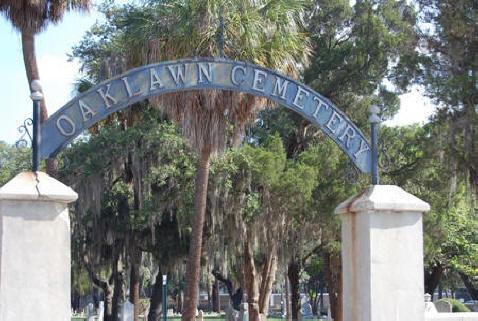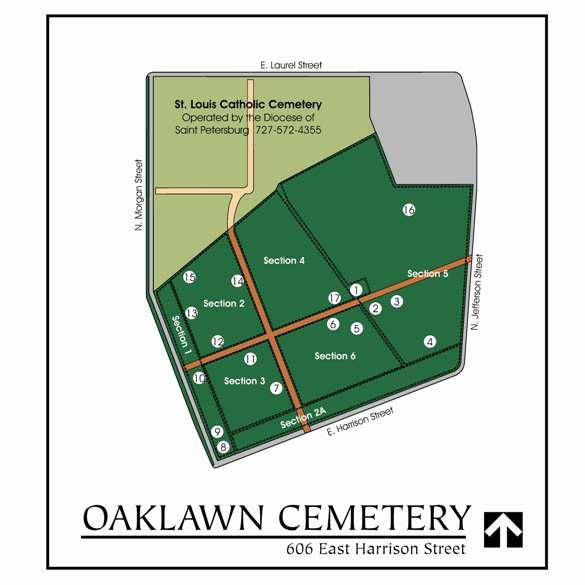
Explore the monuments inside Oaklawn Cemetery, the final resting place for many people of historical prominence, including Tampa's first mayor Joseph B. Lancaster. Follow our Self-Guided Walking Tour of Oaklawn Cemetery or enjoy a piece of Tampa's history online.
Oaklawn Cemetery was created in 1850, when Tampa was a struggling town of around 500 persons. In the minutes of the Alachua County Commissioners meeting, Oaklawn was designated as a public burying ground for "white and slave, rich and poor." Originally, most of the grave markers were wood (usually carved cypress), since stone for memorials necessitated an expensive combination of sail, steamship, and wagon transportation. Tampa had no rail service until 1884. Wood markers were destroyed by fire, rot, and storms, leaving many graves without durable markers. Additionally, the original plat of the cemetery was misplaced after the Civil War, and the locations and identities of many early interments were lost.
At Oaklawn are buried many of Tampa's pioneer families, thirteen mayors of the City, one Florida Governor, two Florida Supreme Court Justices, and the framers of five State Constitutions. A portion of the cemetery was set aside for slaves and "marginal" persons (such as pirates), and public monies were designated to bury indigents.
Begin your online tour here.

- The Sexton House
- Henry Laurens Mitchell
- Hooker Family
- James C. Field
- Joseph B. Lancaster
- James McKay Jr.
- Krause Family
- Wall Family
- Mass Graves
- James T. Magbee
- William and Nancy Ashley
- The Rural Cemetery
- John P. Wall
- James Gettis
- Grave Art
- Charles Wall
- James McKay Sr.
- Cradle Graves
- John T. Lesley Family
- Samuel Friebele
Please refrain from touching grave markers, making rubbings or stepping inside the plat enclosures lest the spirits of Oaklawn Cemetery haunt you forever.
